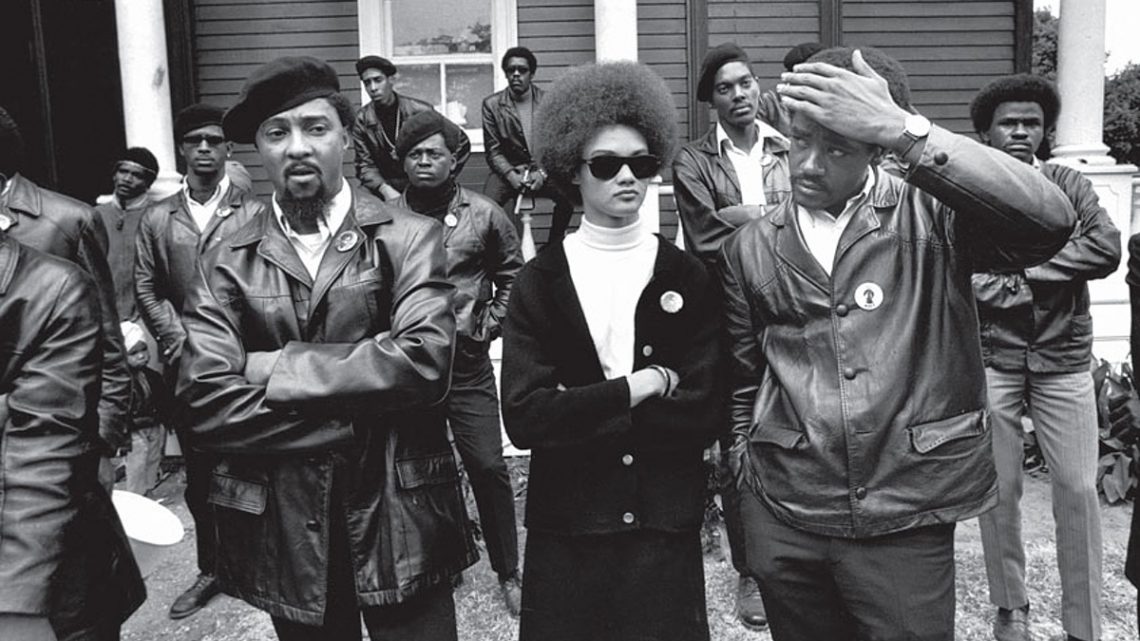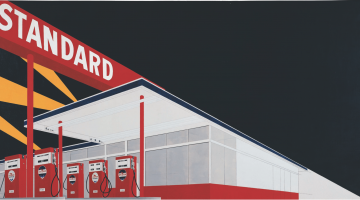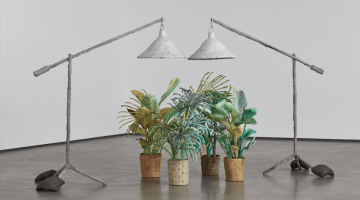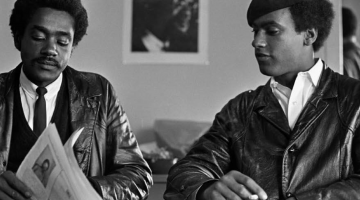The fashion designer Yves Saint Laurent famously quipped that “fashions fade, style is eternal.” This enigmatic statement does much to elucidate the powerful place that style holds in many contemporary cultures. In particular, it alerts us to the relationship that exists between notions of style and notions of history. Or, to the idea that “to have style” is to have the means of inserting oneself into history, while “to lack style” is to risk oblivion. This column, Style Wars, suggests that the tracing of style’s fluctuating movements across varied social, political, aesthetic, and philosophical terrains is important work, and that this is particularly true within the realms of fine art, design, art history, and visual studies (as many important figures within these fields have long vied to claim and contest the ownership of this term). Style Wars aims to appreciate how thinking about style can offer opportunities to think across sets of subjectivities and cultural practices that are often disassociated or pitted against one another. This installment of Style Wars, written by guest contributor Sampada Aranke, focuses on a question of the cool.
Popular wisdom suggests that “being cool” is a mode of self-possession and comportment that is so utterly singular that it is as undefinable as it is unlocatable: “Coolness” as an ineffable, history-less kind of style.
Aranke critically complicates this commonly held belief. Her essay deploys a genealogy of “the cool” that has clear, ancient roots—stemming from the African continent and extending throughout the modern black diaspora. Her essay pays special attention to the way that “being cool” has historically provided a means of resistance and survival. Along the way, it suggests that the acceptance of “the cool” as a definition-less and universal aesthetic is a strategic denial of blackness, orchestrated both explicitly and implicitly in the name of white supremacy.
—Nicole Archer, Column Editor
***
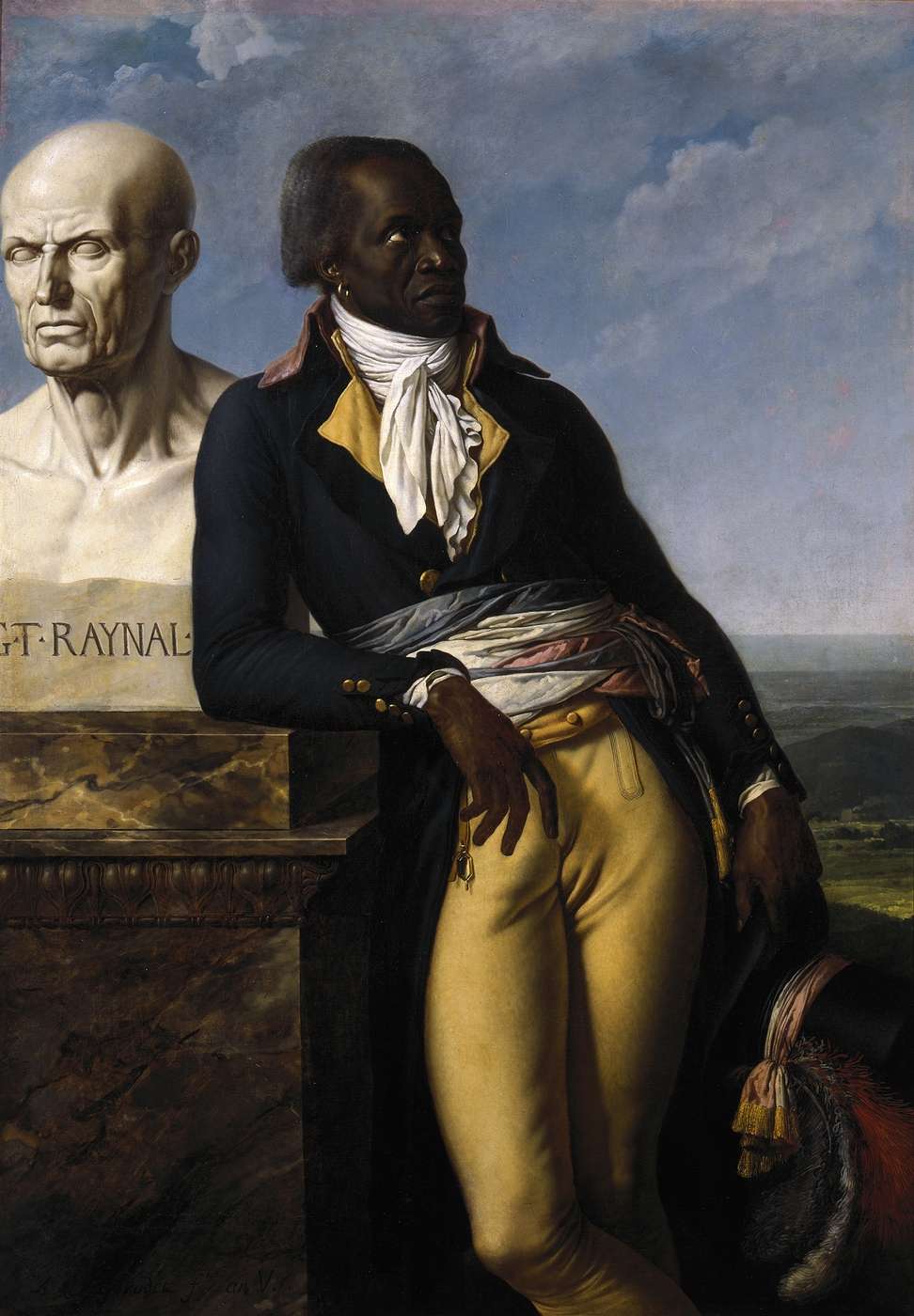
Anne-Louis Girodet Trioson, Jean-Baptiste Belley, député de Saint-Domingue à la Convention, 1797. Oil on canvas, 158 x 111 centimeters. Collection of the Château de Versailles. Courtesy of the Internet.
Black Radical Aesthetics In The Face Of Heat
This October will mark the 50th anniversary of the founding of the Black Panther Party for Self-Defense (BPP), a Black radical organization whose revolutionary self-fashioning not only imaged what Black liberation might look like, but also how cool politics could be. From its inception, the BPP dedicated itself to eradicating racial capitalism and its attendant white supremacist policies, practices, and power. Half a century since the Party’s founding, it seems clear that the BPP became a target of the state not only because of the Panthers’ calls for revolution and community organizing, but also because of their relentless and resistant “coolness.” The BPP’s Black revolutionary form of self-styling was so intense, such a collective political force, that it was, itself, dangerous to a racist status quo.
The BPP’s coolness was forged, not simply in the heat of the moment, but as the art historian Robert Farris Thompson explains in his seminal essay “An Aesthetic of the Cool,” through the activation of a venerable Black diasporic practice that was strong enough to survive the extreme violences of the Middle Passage. For Thompson, “cool”—being it, having it, embodying it—is a Black aesthetic or a mode of comportment, or being, retained from the continent of Africa. The power of “being cool” is found in its ability to be traced back to various and varying African continental ancestral practices that transgress cartographic constraints, tribal affiliations, and historical eras. While at first read Thompson’s study might present itself as a romantic desire for an “authentic” or “essential” African aesthetic, we might instead embrace Thompson’s essay as an articulation of coolness as a Black diasporic practice.
“Coolness” is practiced diasporically as a literal cooling of self (individual or collective) by controlling and relieving heat. These material practices (from funerary rituals in Dahomey that consist of smashing pottery and soothing the land with water to the Gā peoples’ understanding that God reveals himself in rain as means of achieving balance and communication) can be “extended metaphorically to include composure under fire.”1 To be under fire and maintain one’s cool—to be under the threat of fire and to maintain one’s cool—is very much an essential factor of being Black in the U.S. Therefore, being cool manifests a version of the self as tempered, composed, distanced from the actual hot circumstances that enrage, agitate, and make it nearly impossible to live without the heat always being on you. Within that unbearable heat—that unbearable white heat that puts Black life under constant fire—one must maintain their cool, keep cool, be cool, stay cool.
Just think of the discourses surrounding the murders of Rekia Boyd, Mike Brown, Tarika Wilson, Oscar Grant, Sean Bell, Amadou Diallo, Tamir Rice, or any of the other 1140 Black people shot and killed in 2015 alone by police fire in the U.S.2 While news sources spin tales that those killed by police were out of control threats to the police, the burden is placed on Black subjects to keep calm in the face of extreme terror and impending murder. This might approximate how cool as a diasporic practice is a means of survival with no guarantee.
Published in 1973, Thompson’s essay on the cool appears at the political moment in which Black Power was folded into the national imaginary as a revolutionary possibility for Black Americans on the one hand, and as a viable threat to white sanctity and state power on the other. More recently, the art historian Krista Thompson has worked to take Robert Farris Thompson’s notion of the cool to another limit. In “A Sidelong Glance: The Practice of African Diaspora Art History,” she suggests that a Black aesthetics of cool is all about throwing shade.3 We can see those “sidelong glances” all over the art historical canon, where Black subjects (if pictured at all) are pictured in the margins, are looking out of the corner of their eyes at the white subject of the scene. While these canonical images of Black subjects were never meant to celebrate the coolness of Blackness, the sidelong glances activated by these subjects exceed the racist logics that trap these figures into a white supremacist image, and instead make available a modality of Black resistance. This sidelong glance—or averted eye or eye roll—is a kind of throwing shade, a way of looking that keeps cool while activating dissent.4 Krista Thompson notes how these glances are not limited to those pictured, but also are mobilized by those picturing. Contemporary Black artists also throw shade on an art history that merely delimits Black presence to the maids and minstrels on the margins by centralizing coolness and shade as a primary strategy to image Blackness in ways otherwise unseen. Throwing shade, like cool, is a Black mode of style, a Black aesthetic revolt, a mode of Black being that survives otherwise.
Chris Ofili’s Blue paintings deploy coolness and throwing shade as a primary Black aesthetic strategy of resistant visibility. These paintings materialize black and blue hues that flick as if caught in moonlight, ebb and flow like waves and make shadow and figure fold into each other making one indistinguishable from the other. Ofili paints shade as an unwavering ability to keep heat at an approximate distance. In Iscariot Blues (2006), deep blues make barely perceptible a blued-black, blacked-blue figure that hangs from a tree as similarly hued musicians play what we can only hear as the blues itself. This canvas embodies the shadow history of lynching. The entire linen canvas is bruised—one giant bruise hanging on a wall, limp and contorted like the figure himself. Artist Peter Doig calls Ofili’s depiction of this brutal scene a “nonchalant attitude”—a cool rendering of something enraging.5 The “ability to be nonchalant at the right moment” is central to diasporic coolness for Robert Farris Thompson, and it is also central to how shade mobilizes a means of “visual opacity,” or “that which is not easily revealed, made visible, transparently present,” for Krista Thompson.6 For Ofili, this feeling of nonchalance, this cool that Doig feels, conveys a “mood” where the “imagery comes out slowly . . . as a way to subvert the stark imagery.”7 Not an image of clarity, ready to be consumed, the shade makes it such that the figures are hard to see, not readily available for us to take in. We have to work, squint our eyes, change our glance. This shade is thrown at us at the level of the canvas itself, subsumes us, makes it such that we know someone lives and dies, sings and moans in that painting, somewhere in the cool hues of blacks and blues.
In the face of this, I want us to think of coolness and its attendant strategy of throwing shade as a Black diasporic practice that is at once political and aesthetic. Not a conflation of the two—not the aestheticization of politics, the emptying and hollowing out of politics so that it merely becomes an image that one can buy, sell, and co-opt—but rather a simultaneous invocation of how politics can allow us to imagine, and even at times embody, a resistant social image, a revolutionary artistic style, and a transgressive aesthetic modality. 8
Black radicals in the ’60s and ’70s turned to every political, economic, and cultural mechanism at hand to mobilize an aesthetics of Blackness that turned its back on white supremacist logics and their attendant racist stereotypes that made it near impossible to image one’s Blackness as powerful. While a kind of Black cool had long been in circulation before 1960s Black radicals became highly visible, there are many ways in which their manifestation of cool recalled these diasporic practices and injected them with a new method of performing calmness in the midst of terror—methods including throwing shade.9 Born out of a Black radical commitment to revolution and the end of racial capitalism as we know it, we might say that coolness re-emerged in the 1960s as a kind of survival strategy. This model of survival is a self-fashioning that included discipline, distance, and determination in which arms served as but one mechanism for ensuring collective preparation.
This model of self-defense, which necessitated a critical distance where one could reveal “no emotion in situations where excitement and sentimentality are acceptable,” was a way to style oneself in the face of insurmountable heat. 10 This critical coolness was crucial for Black radical subjectivity.
Following their founding in fall 1966, the Black Panther Party armed themselves and followed, watched, and patrolled the heat, i.e. the Oakland Police Department. This mode of counter-surveillance tracked and combated police violence locally, and spurred similar initiatives nationally. Panthers would intervene in police brutality by watching police activity at a near distance, standing ready for action, armed for self-defense. These patrols acted as training grounds, where Panthers staged self-defense by presence alone, firing back was always a threat, always a possibility. Their tempered composure—best exemplified by Kathleen Cleaver’s shade-wearing crossed arm stance and Bobbly Seale’s shade throwing lean—was a kind of cool necessary for self-defense.
It’s no coincidence that the BPP’s first public appearance as an organization was an anti-police violence rally following the April 1967 murder of Denzil Dowell by North Richmond police, who fired multiple rounds, and eventually killed the 22 year-old. The police, as many scholars have charted, are gatekeepers of white supremacist investments, and embody the markings of such investments. 11 By 1967, images of the police beating, fire-hosing, and using their dogs to attack Black people were frequently represented in popular media. It was commonplace to see the police mobilize force against Black bodies every day.12 These images, which pictured the heat uniformed and sealed with their crested badges and holstered guns, made official the extent to which the police protected white supremacist interests at any cost. The BPP image provided a counter-aesthetic—one that relied on the Blackness of the black leather jacket and beret to uniform another self, a collective self that played it cool in the face of such intense heat. The BPP knew what kind of intense, raging violence the cops were capable of, so they patrolled the police from a distance, all the while self-fashioned in an easily identifiable way. We can think of watching the heat, watching the police, as a means of controlling one’s own heat. Crucial to this was also an activation of shade. Wearing shades, throwing shade, that sidelong glance that is all too familiar. To throw shade—that sidelong glance, that averted look—is to radically use one’s cool. The BPP knew how to work an image, and mobilized their militant collective self-fashioning as a manifestation of everything the police were not—“clear-headed and organized,” ultimately a “type of cool-headedness” that countered the hot-headed, reckless, and murderous police.13
Perhaps this cool can partially account for why, in 1968, FBI Director J. Edgar Hoover called the BPP the “greatest threat to the internal security of the country.”14 In a joint effort to discredit and destroy the BPP and other movements for Black liberation, the FBI, in conjunction with local police around the country, started the Counter Intelligence Program (COINTELPRO) aimed to intimidate, eradicate, and incarcerate Black radicals.Many Black radicals are still locked up due to their political organizing during the 1960s, and many of them were accused of police murder. Cool-headedness was such a threat to white supremacy, that those framed for violence against the police continue to serve out inhumane sentences, many of whom have spent the majority of their lives in solitary confinement. Jessica Millward writes that Mumia Abu-Jamal, notable Black radical political prisoner, prison abolitionist, and political philosopher, “comes off cool; a Philly cool; a Black Panther cool; a necessary prison cool.”16 Cool on the outside, but warm on the inside is how Millward goes on to describe Abu-Jamal. The threat of this coolness coupled with this internal warmth—a heat rising, but tempered and leveled as a means of survival—might be precisely why state narratives describe Abu-Jamal as “cold.” We might think of the state’s rhetoric use of the phrase “cold blooded killer” to fictitiously describe Abu-Jamal as but one strategy in legitimizing his incarceration. 17
But Abu-Jamal represents the opposite of coldness. In fact, his entire life has been dedicated to seeing through the liberatory project of the Black radical vision that led to his incarceration. Maintaining his cool behind bars, embodying that critical distance that makes this particular Black diasporic practice a strategy of survival, Abu-Jamal says, “They haven’t stopped me from doing what I want every day. I believe in life, I believe in freedom, so my mind is not consumed with death.”18 This is exactly the kind of cool described by the Gola of Liberia as “to act as though one’s mind were in another world . . .”19 Abu-Jamal embodies a project of Black radical world making to imagine oneself as capable of being free, of a liberation so radical that it can live beyond the scope of this unbearable world.
1) Robert Farris Thompson, “An Aesthetic of Cool,” African Arts, Volume 7, Number 1, 1973, page 41.
2) The Guardian’s The Counted series documents those killed by police in the U.S. As of February 17th, 2006, 127 Black people have been killed in police custody.
3) Thompson, Krista. “A Sidelong Glance: The Practice of African Diaspora Art History in the United States.” The Art Journal. 70. (2011): 7-31.
4) Ibid, 26.
5) Peter Doig and Chris Ofili in BOMB Magazine, Fall 2007.
6) Thompson, Robert Farris, “An Aesthetic of Cool,” African Arts, Volume 7, Number 1, 1973, page 41 and Thompson, Krista. “A Sidelong Glance: The Practice of African Diaspora Art History in the United States.” The Art Journal. 70. (2011): 20. For more on opacity as a central concept in African diasporic modes of survival, see Édouard Glissant, and Betsy Wing. Poetics of Relation. Ann Arbor: University of Michigan Press, 1997.
7) Peter Doig and Chris Ofili in BOMB Magazine, Fall 2007.
8) We have only to think of the 2016 Super Bowl Halftime show (sponsored by Pepsi), where Beyoncé mobilized the image of the Black Panther Party for Self Defense portion of the show. Short-shorts, thigh garters, and high heels accompanied Panther style berets and even a faux ammunition belt for Beyoncé herself. This strange amalgamation combined an added layer of unease, as Beyoncé performed her song Formation, lauded by some as an embrace of her Blackness, and critiqued more pointedly by others for her appropriation of Black queer life and culture. This aestheticization of a Black radical image of cool literally transforms the bullet into a belt, and makes it such that the shield that ammunition was meant to be becomes a strange accessory.
9) Coolness extended before and beyond the 1960s. In a sense, coolness is a retained Black diasporic practice evidenced by the work of figures such as Sojourner Truth and Robert Johnson, and movements such as the Harlem Renaissance to the Black Emergency Cultural Coalition. To say that “an aesthetic of coolness” re-emerges is to account for its cyclical politics of cultural inheritance within Black diasporas.
10) Robert Farris Thompson, “An Aesthetic of Cool,” African Arts, Volume 7, Number 1, 1973, page 41.
11) For more on the historical relationship between police and white supremacy, see Steve Martinot and Jared Sexton. “The Avant-Garde of White Supremacy.” Social Identities, 9.2 (2003): 169-181; Bryan Wagner, Disturbing the Peace: Black Culture and the Police Power After Slavery. Cambridge, Mass: Harvard University Press, 2009; Amy L. Wood, Lynching and Spectacle: Witnessing Racial Violence in America, 1890-1940, Chapel Hill: University of North Carolina Press, 2009; Orisanmi Burton, “To Protect and Serve Whiteness.” North American Dialogue, 18.2 (2015): 38-50.
12) Martin A. Berger, Seeing Through Race: A Reinterpretation of Civil Rights Photography, Berkeley: University of California Press, 2011.
13) Collective Statement by the Connecticut 9, Political Prisoners, published in The Black Panther, May 2, 1970.
14) See Ward Churchill and Jim VanderWall, Agents of Repression: The FBI’s Secret Wars against the Black Panther Party and the American Indian Movement, Cambridge, Mass: South End Press, 2008 and Liz Derias, Andres Alegria, Lincoln Bergman, Muhammad Ahmad, Kathleen Cleaver, Ward Churchill, Roxanne Dunbar-Ortiz, Elmer G. Pratt, José E. López, Ricardo Romero, Akinyele O. Umoja, and Laura Whitehorn, Cointelpro 101, Oakland, CA: PM Press, 2011.
15) Ibid.
16) Jessica Millward, “Mumia: Vulnerability and Hope,” The Feminist Wire, January 23, 2014.
17) Paul Waldman, “The Mythological Cold-Blooded Killer,” The American Prospect, March 7, 2014.
18) Laura Smith, “‘I spend days preparing for life, not for death’,” The Guardian, October 25, 2007.
19) Robert Farris Thompson, “An Aesthetic of Cool,” African Arts, Volume 7, Number 1, 1973, page 41.
Previous installments of Style Wars:
Style Wars: The Power of Style
Style Wars: Critical Reflections On The Power Of Style
Style Wars: Critical Reflections On The Power Of Style
Style Wars: California Cool
Style Wars: The Dissident Dandy
Style Wars: American Gothic
